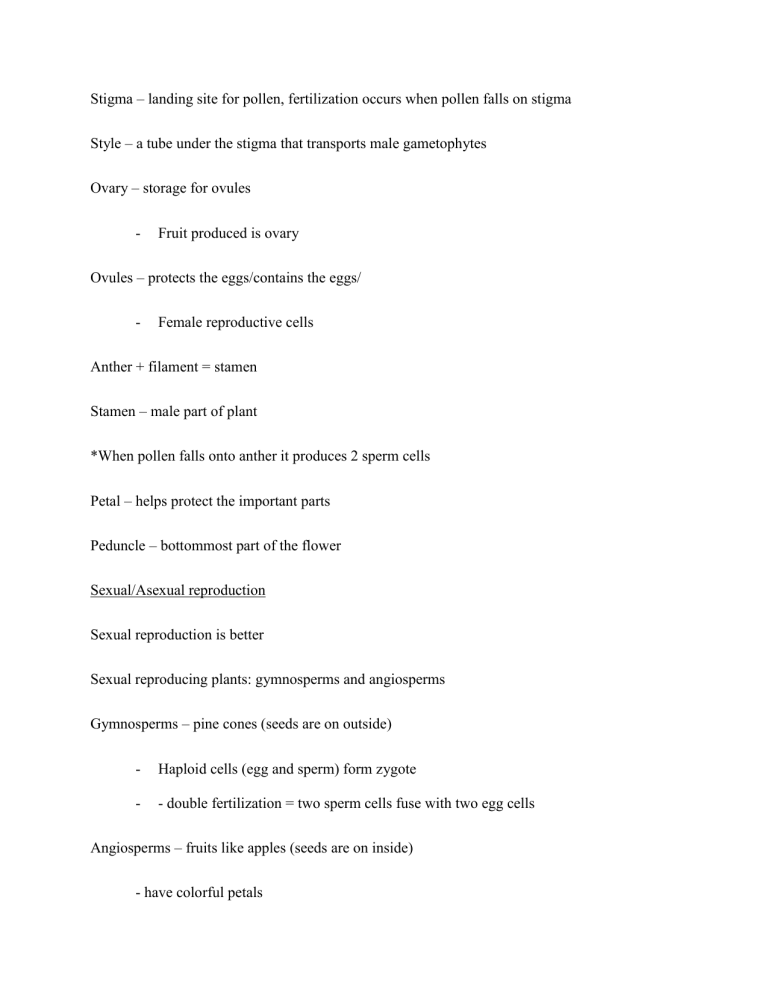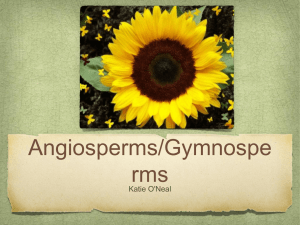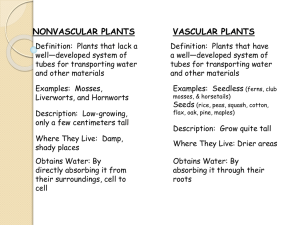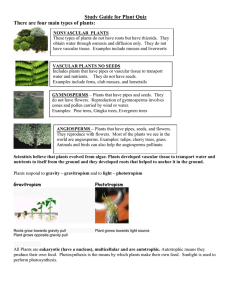
Stigma – landing site for pollen, fertilization occurs when pollen falls on stigma Style – a tube under the stigma that transports male gametophytes Ovary – storage for ovules - Fruit produced is ovary Ovules – protects the eggs/contains the eggs/ - Female reproductive cells Anther + filament = stamen Stamen – male part of plant *When pollen falls onto anther it produces 2 sperm cells Petal – helps protect the important parts Peduncle – bottommost part of the flower Sexual/Asexual reproduction Sexual reproduction is better Sexual reproducing plants: gymnosperms and angiosperms Gymnosperms – pine cones (seeds are on outside) - Haploid cells (egg and sperm) form zygote - - double fertilization = two sperm cells fuse with two egg cells Angiosperms – fruits like apples (seeds are on inside) - have colorful petals *Seeds are mostly transported thru animals and wind Xylem – transports water and minerals (mainly made of ligand so it can withstand a lot of water) Phloem – food transport Angiosperm (flowering plants) come in two classes: monocots and dicots - Monocots have 1 cotyledons o Veins are parallel o Veins are webbed and netted o Fibrous root system o Floral parts in multiples of 3 - Dicots have 2 cotyledons o Veins are netlike o Vascular bundles are arranged in a ring o Taproot root system o Floral parts in multiple of 4 or 5 Seeds come from fertilized ovule (megasporangium – covered by integrement(thick coat)) Pollen touches stigma, flows down style to get to ovaries, the gets to ovule Nonvascular bryophytes – mosses, liverworts, hornworts Vascular seedless plants – club mosses, ferns Vascular Seed Plants – gymnosperms, angiosperms Oldest to Newest: Liverworts, mosses, hornworts, club mosses, ferns, gymnosperms, angiosperms Nonvascular plants use osmosis and diffusion and have budding Vascular plants use mitosis and Meiosis Nonvascular fertilization Archegonia form at tip of gametophyte shoot If sperm cell does not reach female, it can grow a sporophyte and branch off and become its own plant. Sporangium is 2n (diploid) Haploid = mitosis





